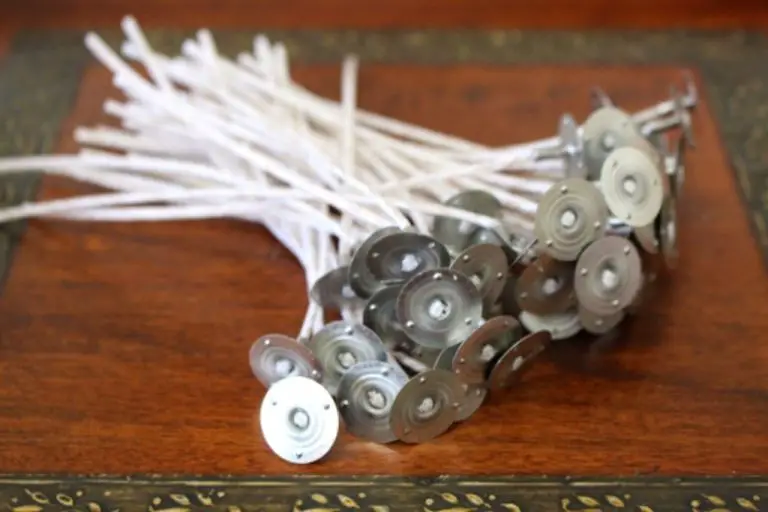Why Won T My Bath And Body Works Candle Stay Lit?
It’s frustrating when a Bath & Body Works candle won’t stay lit. You light the wick and it immediately goes out or only stays lit for a short time before extinguishing itself. There are several potential reasons why your B&BW candle may not be staying lit properly.
In this article, we’ll explore the most common causes of B&BW candles not staying lit and provide tips to help resolve the issue. With some troubleshooting and proper care, you can get your favorite B&BW candles burning brightly again.
Wick Issues
One of the most common reasons a Bath & Body Works candle won’t stay lit is that the wick is too short or too tightly woven [1]. A short or tight wick prevents the flame from getting enough oxygen to keep burning. As the candle burns down, the wick becomes shorter and can get drowned in melted wax before reaching the bottom of the jar.
Short wicks are often an issue in containers with a wide diameter like Bath & Body Works’ signature 3-wick candles. The wick needs to be long enough to reach from bottom to top as the candle burns down. Tightly woven wicks also have trouble staying lit because the fibers are packed too densely for oxygen to pass through.
To fix a short or tight wick, you can carefully pull the wick up to expose more length above the wax. It also helps to trim the wick before lighting to remove any excess at the tip. You may need to repeat this wick maintenance each time you burn the candle. If the wick continues having issues staying lit, replacing it with a longer, more loosely woven wick can help [2].
Wax Issues
If your candle won’t stay lit, the problem may be due to the wax consistency. The ideal wax for candles is firm enough to hold its shape when cold, but softens into a liquid pool when lit. Bath & Body Works primarily uses paraffin and soy wax blends, which need to hit the right balance.
If the wax is too soft, it can become misshapen or slump over when not lit. The wick may lean or fall over in soft wax, making it difficult to light. Soft wax also tends to create a wax pool that is too deep as it melts. This allows the melt pool to reach the bottom and sides of the jar too quickly, extinguishing the flame.
On the other hand, wax that is too hard may not melt properly when lit. This leads to a wax pool that is too shallow, preventing the melt pool from reaching the full diameter of the jar. Without an adequate wax pool, the flame can easily become smothered along the edges and go out.
To troubleshoot, inspect the candle wax when cold. If it seems overly soft or misshapen, or if you notice the wick leaning, the wax may be too soft. Try keeping the candle in a cooler area to firm it up. If the wax is rock solid and doesn’t pool well when burned, the wax may be too hard – try keeping the candle in a warmer area before lighting.
If adjusting temperature doesn’t help, the wax blend itself may be off. In that case, contact Bath & Body Works customer service to request a replacement candle.
Sources:
https://www.diygateway.com/common-soy-candle-wax-problems-troubleshooting-guide-with-tips/
https://housecleaningcentral.com/cleaning-tips/tip/remove-candle-wax-clean/
Fragrance Oil Issues
Certain fragrances, especially floral or fruity scents, can make candles more prone to smoking or sooting issues. This happens because some fragrance oils don’t fully combust in the candle flame and can clog the wick (1). The unburned oils accumulate on the wick and jar, creating black smoke and soot.
Common candle fragrances known to cause smoking and sooting include gardenia, lilac, rose, pine, and citrus. These oils contain chemicals like limonene and linalool which are unsaturated hydrocarbons. Their molecular structures make them more inclined to leave soot behind rather than burning cleanly (2).
If you notice your candle develops major soot problems after switching scents, the fragrance oil is likely the culprit. Opt for simpler fragrances like vanilla, cinnamon, or clean cotton that tend to burn cleaner in candles.
Sources:
(1) https://fontanacandlecompany.com/blogs/bee-well-blog/the-problem-with-fragrance-oils
(2) https://petitsrituels.com/en-us/blogs/petits-rituels-blog/are-fragrance-oils-harmful-in-candles
Jar Issues
The size of the candle jar and how it fits with the lid can cause issues with the candle staying lit properly. If the jar is too small for the candle, it can lead to the flame being extinguished from lack of oxygen. The wax pool may also climb high up the sides in a small jar since heat gets trapped. On the other hand, a jar that is too large can make it hard for the candle to fill the space with fragrance and provide an even melt pool.
An improper lid fit can also lead to problems. If the lid fits too loosely, it can shift while burning and cut off air supply to the flame. A lid that seals too tightly may trap moisture and extinguish the flame. The ideal is a lid that rests gently on top of the jar without shifting around.
To avoid jar issues, carefully follow the recommended jar size and type for the candle wax amount per Bath & Body Works’ instructions. Make sure to use the right sized wick as well. Test lids on the jars during production to ensure a good fit that is not too tight or loose before pouring wax.
Air Flow
Air flow around a candle can cause issues with the flame staying lit. Drafts, ceiling fans, air vents, and other sources of moving air can blow at the flame and cause it to go out before the wax is fully melted and the candle has reached the full melt pool. This is one of the most common reasons B&BW candles have trouble staying lit.

To avoid problems with air flow, make sure to burn candles away from vents, fans, open doors and windows. Avoid placing candles near frequently opened doors as the brief gust when opening can extinguish the flame. Also keep candles protected from central air currents in a room.
One tip from candlemakingvillage.com is to use a flame guard to help block drafts and protect the flame. Positioning the candle inside a glass container or lantern can also block air currents. Avoid any strong or direct air flows pointed at the candle.
Additionally, according to communitycandlesupply.com, using a wick sustainer or wick bar can help center the wick and make it less impacted by drafts. Keeping the wick centered prevents it from blowing to the side and going out.
Burn Time
One of the most common reasons a Bath & Body Works candle won’t stay lit is burning it for the wrong amount of time before blowing it out. According to this article, you should allow a candle to burn for at least 1 hour before blowing it out to establish a proper melt pool. Blowing it out too soon can create an uneven burn and make it difficult for the candle to stay lit next time.
On the other hand, burning a candle for too long before extinguishing can also cause issues. As recommended by Bath & Body Works, you should not burn a candle for more than 4 hours at a time. Burning for longer than this can cause the wax to overheat and the wick to become too short, making it hard for the candle to remain lit. Allow the wax pool to solidify completely before relighting.
Trim The Wick
One of the top reasons why your candle may not be staying lit is because you haven’t trimmed the wick before lighting. Untrimmed wicks tend to produce more smoke and soot, causing the candle to tunnel and go out more easily. Per the Candle Wick Trimming Tool | How to Maintain …, using a candle wick trimming tool will help maintain the life and quality of candles. Wick trimmers provide a clean and precise cut every time.
Before lighting your candle, use scissors or a special wick trimmer tool to carefully trim the wick to 1⁄4 inch. Trim the wick every time before lighting, and trim again if the wick becomes extremely long while burning. This helps control the size of the flame and prevents excess soot and smoke. With a nicely trimmed wick, your candle will burn cleaner and stay lit for longer.
Proper Candle Care
When lighting your candle, it’s important to allow the wax pool to form completely before blowing it out. According to The White Company’s candle care guide, you should burn the candle for at least 2 hours the first time to allow the wax pool to form (source). Letting the wax pool completely ensures proper melt and an even burn in the future.
Additionally, make sure to trim the wick to 1⁄4 inch before lighting to avoid smoking or an uneven flame. Always blow out candles before they reach the bottom of the jar, leaving 1⁄2 inch of wax. This prevents the glass from cracking from overheating.
When extinguishing the candle, avoid blowing directly on the flame which can spread the wax. The apothecary recommends gently waving a snuffer or your hand above the flame until it goes out (source).
Proper care will maximize your candle’s burn time and allow for an even, complete melt.
When to Get a Replacement
If you’ve tried troubleshooting techniques but your Bath & Body Works candle still won’t stay lit, it may be time to get a replacement. Here are some signs there’s an issue specific to that candle and not your usage or environment:
- The wick won’t stay upright, immediately falls over, or won’t catch a flame no matter what you try.
- The wax pool won’t melt evenly or the edges stay solid.
- The flame sputters out quickly after lighting or keeps going out repeatedly.
- You notice an unusual amount of soot building up on the wax or jar.
- The candle emits a strange odor when burning, different from the intended fragrance.
- You see odd bubbling or crackling from the wax pool when lit.
- The candle fails the “toothpick test” – a toothpick inserted into the wax doesn’t come out smoothly.
In these cases, it’s likely a manufacturing defect rather than something you’re doing wrong. You can exchange the candle for a new one at the store where you purchased it. Bath & Body Works typically allows exchanges with a receipt. Bring the candle back to swap it for the same scent to get the most satisfaction from your favorite fragrance.


